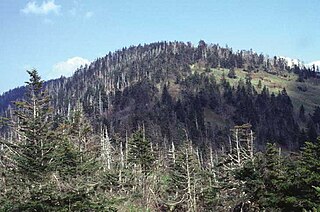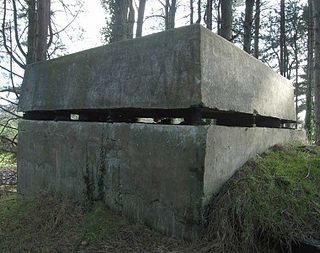
An ambush is a long-established military tactic in which combatants take advantage of concealment and the element of surprise to attack unsuspecting enemy combatants from concealed positions, such as among dense underbrush or behind hilltops. Ambushes have been used consistently throughout history, from ancient to modern warfare. In the 20th century, an ambush might involve thousands of soldiers on a large scale, such as over a choke point such as a mountain pass, or a small irregular band or insurgent group attacking a regular armed force patrol. Theoretically, a single well-armed and concealed soldier could ambush other troops in a surprise attack. Sometimes an ambush can involve the exclusive or combined use of improvised explosive devices, that allow the attackers to hit enemy convoys or patrols while minimizing the risk of being exposed to return fire.
In physics, a frame of reference consists of an abstract coordinate system and the set of physical reference points that uniquely fix the coordinate system and standardize measurements within that frame.

Clingmans Dome is a mountain in the Great Smoky Mountains of Tennessee and North Carolina, in the southeastern United States. At an elevation of 6,643 feet (2,025 m), it is the highest mountain in the Great Smoky Mountains National Park, the highest point in the state of Tennessee, and the highest point along the 2,192-mile (3,528 km) Appalachian Trail. It is also the third highest point in mainland Eastern North America, after the nearby Mount Mitchell and Mount Craig.

An observation post, temporary or fixed, is a position from which soldiers can watch enemy movements, to warn of approaching soldiers, or to direct artillery fire. In strict military terminology, an observation post is any preselected position from which observations are to be made - this may include very temporary installations such as a vehicle parked as a roadside checkpoint, or even an airborne aircraft.

An observation tower is a structure used to view events from a long distance and to create a full 360 degree range of vision to conduct long distance observations. Observation towers are usually at least 20 metres (66 ft) tall and are made from stone, iron, and wood. Many modern towers are also used as TV towers, restaurants, or churches. The towers first appeared in the ancient world, as long ago as the Babylonian Empire.
Observational comedy is a form of humor based on the commonplace aspects of everyday life. It is one of the main types of humor in stand-up comedy. In an observational comedy act, the comedian "makes an observation about something from the backwaters of life, an everyday phenomenon that is rarely noticed or discussed." The humor is based on the premise of "Have you ever noticed?", which has become a comedy cliché. "Observational humor usually takes the form of long monologs of personal narrative; the punchline is either hard to predict or never came."

Observation Hill is a steep 754-foot (230 m) hill adjacent to McMurdo Station in Antarctica and commonly called "Ob Hill." It is frequently climbed to get good viewing points across the continent. Regular clear skies give excellent visibility.
In statistics, a unit of observation is the unit described by the data that one analyzes. For example, in a study of the demand for money, the unit of observation might be chosen as the individual, with different observations for a given point in time differing as to which individual they refer to; or the unit of observation might be the country, with different observations differing only in regard to the country they refer to. A study may have a differing unit of observation and unit of analysis: for example, in community research, the research design may collect data at the individual level of observation but the level of analysis might be at the neighborhood level, drawing conclusions on neighborhood characteristics from data collected from individuals. Together, the unit of observation and the level of analysis define the population of a research enterprise.

An observation balloon is a type of balloon that is employed as an aerial platform for intelligence gathering and artillery spotting. Use of observation balloons began during the French Revolutionary Wars, reaching their zenith during World War I, and they continue in limited use today.

Moran State Park is a public recreation area on Orcas Island in Puget Sound's San Juan Islands in the state of Washington, United States. The state park encompasses over 5,000 acres of various terrain including forests, wetlands, bogs, hills, and lakes. It is the largest public recreation area in the San Juan Islands and the fourth largest state park in the state. A park focal point is the observation tower atop Mount Constitution, the highest point in San Juan County at 2,407 feet.

Observation Post Alpha, OP Alpha, or Point Alpha was a Cold War observation post between Rasdorf, Hesse, in what was then West Germany and Geisa, Thuringia, then part of East Germany. The post overlooked part of the "Fulda Gap", which would have been a prime invasion route for Warsaw Pact forces had the Cold War erupted into actual warfare. It was abandoned by the military in 1991. Today, the "Point Alpha" memorial commemorates the Observation Point's four decades of existence. The memorial is dedicated to keeping it and a nearby section of the inner German border as reminders of the division of Germany and the confrontation between NATO and Warsaw Pact in the Cold War.
In fields such as epidemiology, social sciences, psychology and statistics, an observational study draws inferences from a sample to a population where the independent variable is not under the control of the researcher because of ethical concerns or logistical constraints. One common observational study is about the possible effect of a treatment on subjects, where the assignment of subjects into a treated group versus a control group is outside the control of the investigator. This is in contrast with experiments, such as randomized controlled trials, where each subject is randomly assigned to a treated group or a control group.

A fire control tower is a structure located near the coastline, used to detect and locate enemy vessels offshore, direct fire upon them from coastal batteries, or adjust the aim of guns by spotting shell splashes. Fire control towers came into general use in coastal defence systems in the late 19th century, as rapid development significantly increased the range of both naval guns and coastal artillery. This made fire control more complex. These towers were used in a number of countries' coastal defence systems through 1945, much later in a few cases such as Sweden. The Atlantic Wall in German-occupied Europe during World War II included fire control towers.

The Volunteer Air Observers Corps (VAOC) was an Australian air defence organisation of World War Two. The VAOC was formed in December 1941 to support the Royal Australian Air Force (RAAF) with its main roles of sighting and observing aircraft over Australia. The VAOC swiftly established thousands of Observation Posts (OP) across the country and provided information to the RAAF's regional air control posts.

On 10 June 1982, in the closing days of the Falklands War, Many Branch Point, a ridge near Port Howard in West Falkland, was the site of a minor skirmish between the Argentine and British Armed Forces. The engagement ended with the death of the SAS patrol commander, Captain Gavin Hamilton. The action was the only land engagement of the British and Argentine forces on West Falkland during the conflict.
No. 651 Squadron RAF was a unit of the Royal Air Force in Italy and North Africa during the Second World War and afterwards in Egypt. Numbers 651 to 663 Squadrons of the RAF were Air Observation Post units which had both Army and RAF personnel. The pilots, drivers and signallers were in the Royal Artillery whilst the adjutants, technical staff and equipment officers came from the RAF. Air observation posts were used primarily for artillery spotting, but occasionally for liaison and other duties. Their duties and squadron numbers were transferred to the Army with the formation of the Army Air Corps on 1 September 1957.
Buckberg mountain is a hill above the Hudson River that played a role in American Revolutionary War strategy concerning the Hudson Highlands.
No. 654 Squadron RAF was a unit of the Royal Air Force during the Second World War. Numbers 651 to 663 Squadrons of the RAF were Air Observation Post units working closely with Army units in artillery spotting and liaison. Their duties and squadron numbers were transferred to the Army with the formation of the Army Air Corps on 1 September 1957.

The Turkish military operation in Idlib Governorate, also described as Idlib De-escalation Control Force activities, is an operation by the Turkish Armed Forces which started in October 2017, following the earlier Operation Euphrates Shield. It is the third operation of the Turkish occupation of northern Syria, following Operation Euphrates Shield and Operation Shah Euphrates.

The 2018 Syrian-Turkish border clashes began on 31 October 2018 when the Turkish Armed Forces began to shell People's Protection Units (YPG) positions near the cities of Kobani and Tell Abyad as well as surrounding villages.












